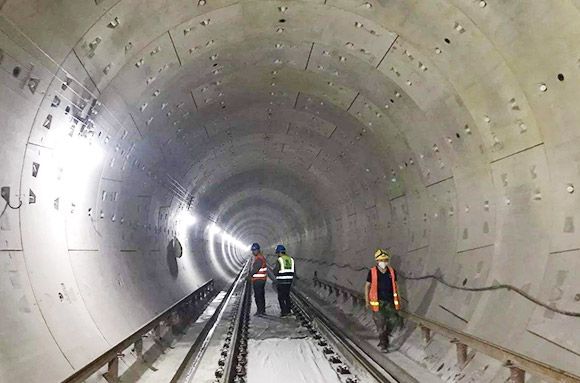Home >> News >> Latest News
Railways are more than just steel beams; they are high-quality and well-made technical products. This is because not every steel is the same. Most rails are made of steel, but have a specific composition with different components that make them durable.
The importance of rails as "special steel beams" can be explained by their main function. The rails provide the surface on which railway vehicles run. At the bottom of the track, the track legs transfer the load and distribute it over a larger surface. Huge forces can be applied in all dimensions. Both in the transport of goods with high axle loads and in the transport of high-speed trains with very dynamic loads. When trains travel around curves, severe vertical forces are generated.
Of course, the wear resistance and long life of the rails are very important, as they must neither break nor be too soft. Despite the relatively small contact area of the wheels on the running surface of the track, frictional connections must be obtained without leaving any marks on the structure and surface. YONG YANG shows you the approximate manufacturing process of steel railway rails.
To make iron rails, pig iron must first be made. To do this, iron ore containing lime and coke is heated to over 1,500 °C with a constant supply of fresh air in the blast furnace. The result is pig iron and slag. Pig iron is not suitable as a building material but as a raw material for the production of steel. It must still be desulphurised. The steel is produced in a second step by a so-called oxy-fuel refining process. The carbon content is reduced from approximately 4% to a maximum of 1.5%. Other additives determine the subsequent material properties. The alloys made in this way from rail steel are made up of a complex mixture of various chemical elements. Some are added and other substances - especially those that make it more brittle - are safely removed by the refining process.
Unwanted iron products with a special affinity for oxygen are then deposited as slag. The "oxygen blowing process", which is common today, was introduced in 1949 and is a very economical way of producing high-quality, low-polluting steel and electrical steel by the electric arc melting process. It is also common to add large quantities of scrap metal to the steel melt. The entire production process ensures a pure, homogeneous material with precisely defined properties.

The still steel is poured into moulds (vacuum casting) or, while still liquid, into special ladle cars to be moved for further processing. For rails from the hot rolling process, this may consist of 20 rolling operations until the desired profile is achieved. The profile, mill and year of production can be shown on the rails as raised "rolling marks" and have a long tradition. You can check our light steel rails and heavy steel rails at our website.
After rolling, the finished rails must be cooled in a controlled manner to avoid damage to the internal stresses and rough structure. In addition, ultrasonic testing is recommended to detect any production errors, as otherwise voids and cavities in the material may have unforeseen consequences if the rails fail later. The so-called rolled skins produced during the production process protect the rails completely on the running surface, it can only be eliminated after installation. You can contact our experts to find more.

Leave a message